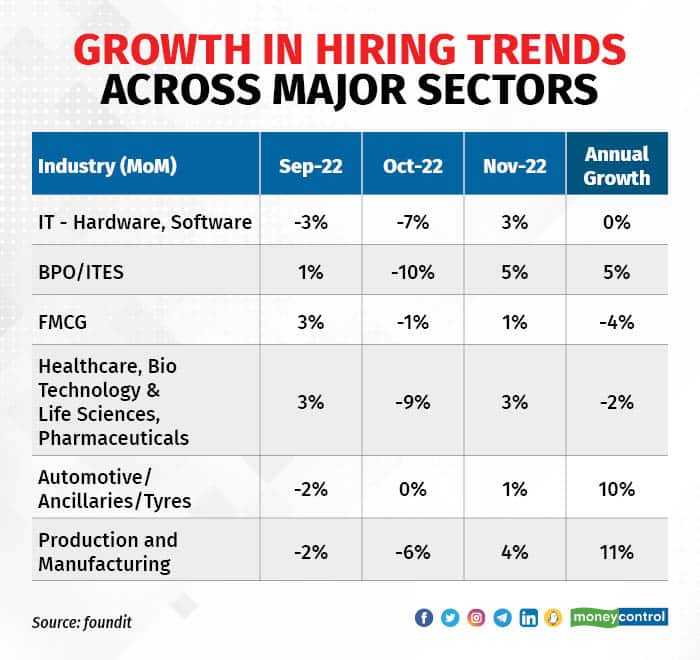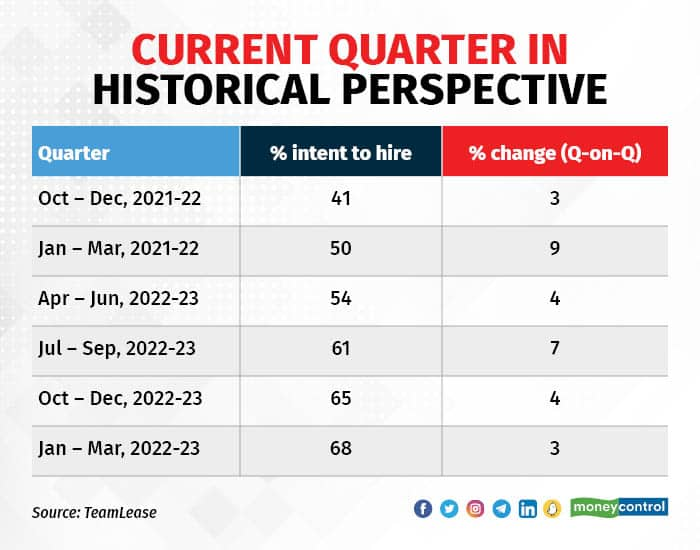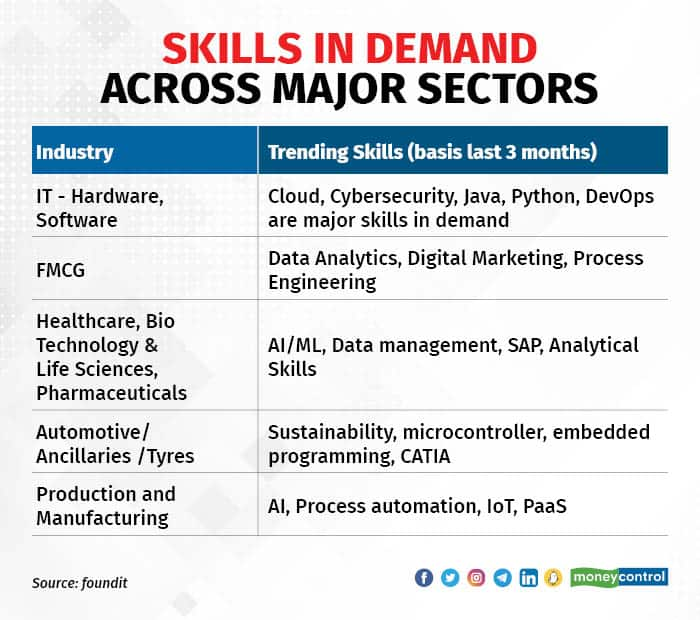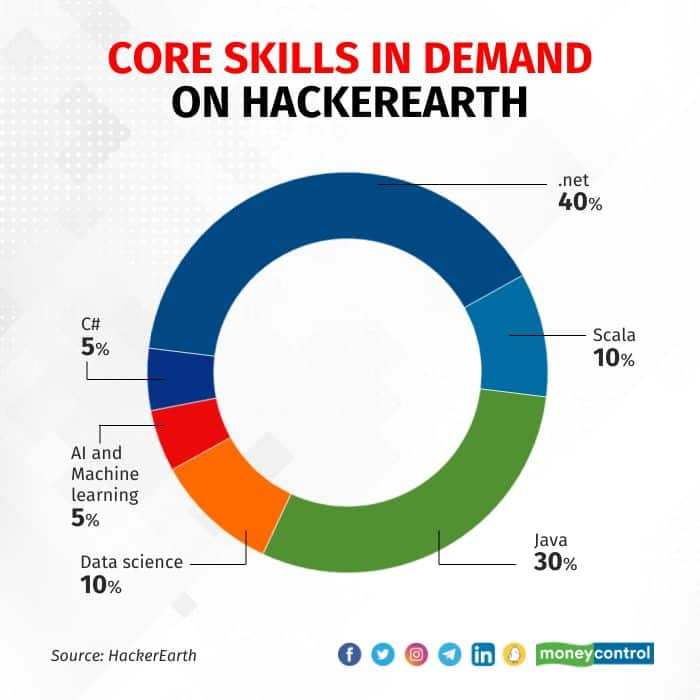



Tech roles across IT, banking, financial services and insurance (BFSI), fast-moving consumer goods, and healthcare are poised for strong growth in 2023 even amid a gloomy outlook for jobs, staffing firms and job portals predicted.
In addition, key sectors that have indicated their intent to hire are e-commerce, telecommunications, educational services, financial services, retail and logistics. There will also be increased demand for developers of solutions to combat climate change, experts said.
The optimistic prospects for next year come after experts said the dismal job market in 2022 was more a story of a course correction than disruption. When the service sector showed the door to many workers, employment prospects looked bleak in India.
According to KPMG’s 2022 India CEO Outlook, 33 percent of CEOs in India and 39 percent globally have already implemented a hiring freeze, and 47 percent in India are considering downsizing over the next six months.
Job portals and HR companies said the growth expected in many sectors as the economy recovers after the pandemic is set to support increased hiring at various levels.
According to Mayur Taday, chief business officer at staffing firm TeamLease Services, the central government’s Rs 6 lakh crore asset monetisation plan over four years to 2025 and revisions in foreign investment laws in the defence and telecom sectors will have a greater influence on employment in the fourth quarter of FY23.
Growth projections
Mumbai among the metros and Ahmedabad among tier-2 cities are expected to lead online recruitment in India, according to job portal foundit. Bengaluru and the National Capital Region may lead hiring in the automation market and research agencies, whereas Coimbatore is expected to lead tier-2 cities with IT services, BPO and auto components as growth drivers.
ALSO READ | Metaverse set to spark next job boom. Get ready with these skills
“Growth projections in sectors such as BFSI, retail, automotive, real estate and construction will lead to higher demand in these cities,” Sekhar Garisa, CEO-APAC & ME at foundit (previously Monster) told Moneycontrol.
According to the foundit Insights Tracker, e-recruitment witnessed an overall growth of 3 percent for January-November from the period in 2021.

As per foundit data, the retail, BFSI and automotive sectors are expected to grow 20 percent in 2023. Experts said with innovation transforming personalised experiences, there will be new roles and hiring prospects in the retail sector with demand in ‘retail analytics.’
A foundit spokesperson said the banking sector will explore quantum computing, which will be reflected in their hiring patterns.
“Hyper-automation will be at its peak and wealth management will witness newer roles. It is anticipated that India’s BFSI sector will employ an extra 1.6 million skilled professionals by 2023,” the spokesperson said.
On the automotive front, technology and digital sales will have a role to play in the sector’s growth in 2023. Although IT’s growth may be muted in the first half of the year, it should pick up in the second half of 2023.
ALSO READ | Silver lining amid startup lay-offs: Sectors hiring for recently axed roles
A strong outlook is projected for the fourth quarter of FY23, especially for fresh graduates and entry-level employees, with 79 percent of employers (74 percent in Q3) willing to hire from this cohort, TeamLease’s Employment Outlook Report for Q4 showed. While the intent to hire is high for mid-level posts at 50 percent, it is 32 percent for senior-level positions.
According to the survey that covered 573 small, medium and large enterprises, intent to recruit new employees was indicated by 82 percent of the large companies, followed by 61 percent of small companies and 50 percent of medium companies.
For candidates seeking opportunities in the services segment, the key sectors leading the intent to hire are e-commerce (98 percent), telecommunications (94 percent), educational services (93 percent), financial services (88 percent), retail (85 percent) and logistics (81 percent).

Tech hiring slows
India is not immune to the significant churn in the tech employment landscape globally and the impact of US recessionary fears has impacted employment patterns locally.
Hiring by enterprises has slowed by 20 percent in the past one year. Small and medium businesses have been hit harder, with their hiring having slowed down by about 40 percent from last year, HackerEarth’s data showed.
HackerEarth is an Indian software company based in San Francisco that provides enterprise software to assist companies such as Amazon, Walmart Labs, Microsoft, and PayPal with technical hiring. The data is based on 152 companies and 474,000 talent engaged.
HackerEarth had about 200,000 freshers applying for jobs through its platform in Q4 of 2021. The number has fallen by 40 percent in Q4 of 2022.
ALSO READ | Analysis: Which engineering degree is the most lucrative
For the senior developer cohort, the dip is less drastic – about 10,000 applications compared with 16,000 in Q4 of 2021.
“The shifts in the market have meant a re-prioritisation for companies with inefficiencies coming under greater scrutiny. At the same time, the need for transformation and innovation, which have been in overdrive since the pandemic, isn’t slowing down even in the current market,” said Sachin Gupta, founder of HackerEarth.
Gupta said he expects this to be a short-term development manifested by current economic conditions.
Who is hiring what
Artificial intelligence and machine learning will continue to grow at a CAGR of 33.49 percent till 2023 and so will the associated hiring demand.
“Further, hyper-automation will drive businesses to give a clear perspective of tasks and process performance,” Garisa of foundit said.
According to hiring trends tracked by Genius Consultants during Q4, FMCG companies are looking for people in marketing, warehouse managers and related personnel, and people with logistics management skills.

In automobiles, demand was more for production, logistics, sales and technical staff at the factory level.
In pharmaceuticals, the highest demand was for sales representatives, followed by testers and R&D personnel, apart from technical professionals for factories.

RP Yadav, chairman of Genius Consultants said demand for personnel in most sectors including retailing, banking, FMCG, pharma, logistics and e-commerce will increase 10-15 percent in the next quarter and continue in the first quarter (April-June) of the next financial year.
If the Russia-Ukraine war stops and recession fears ease in the US and the UK, demand in the IT/ITeS market will increase substantially, Yadav added.
“But at the moment, it is difficult to forecast the exact trend and percentage for IT/ITeS,” he said.
ClimateTech is the new craze
HackerEarth said climate change could be the next growth factor as companies become more aware of the potential of technology to make significant contributions to the global climate mission.
An estimated 10,000 developers participated in climate change hackathons over the past four years, with 7,000 in 2022 alone, it said.
ALSO READ | IT vs Non-IT sector: How entry-level salaries have evolved over 5 years
“This is both due to increased opportunities as well as increased awareness among the developer community. We have seen 590 prototypes from 1,500 ideas across all climate change hackathons,” Gupta said.
These prototypes span the gamut of climate change technology – from carbon sequestration tools to the use of Web3 technology for emphasising and demystifying trading of carbon credits.
The companies that run such hackathons are not just from the core tech sector and they include banking, edtech and even NGOs and governments from countries such as the UAE and Botswana.
“An offshoot of this theme is the focus on agri-tech as a result of an increased understanding and awareness of how climate change affects our most basic source of livelihood and food, more so in developing nations,” Gupta said.
On the skills in demand, he said the climate tech sector is an amalgamation of various skill sets that can help solve various issues and there is no singular focus on any specific technical aspect.
The role of technology in mitigating climate disasters is mostly centred on data analysis, extracting insights, and designing solutions. Data science, machine learning and AI skills lend themselves nicely to this domain. Also, climate tech systems interact with IoT devices deployed at various places, collecting data.
Discover the latest Business News, Sensex, and Nifty updates. Obtain Personal Finance insights, tax queries, and expert opinions on Moneycontrol or download the Moneycontrol App to stay updated!
Find the best of Al News in one place, specially curated for you every weekend.
Stay on top of the latest tech trends and biggest startup news.